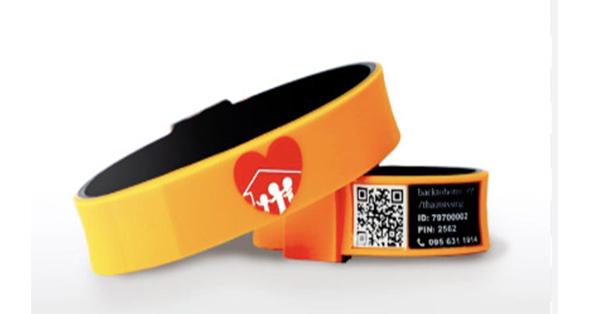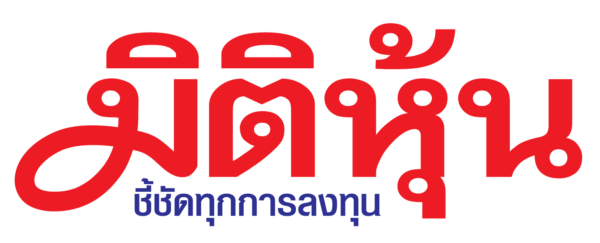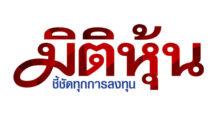 Mitihoon – Elderly individuals are crucial members of families who still desire to lead meaningful and valuable lives. However, with age-related changes, families need to understand and find ways to ensure their safety, especially for seniors showing signs of memory loss and at risk of wandering.
Mitihoon – Elderly individuals are crucial members of families who still desire to lead meaningful and valuable lives. However, with age-related changes, families need to understand and find ways to ensure their safety, especially for seniors showing signs of memory loss and at risk of wandering.
Because missing persons incidents can happen to anyone, according to statistics from the Missing Persons Data Center, the Mirror Foundation, in the year 2023, there were a total of 2,200 reported missing person cases. The demographic group with the highest proportion of missing persons is the elderly. At present, they have become a significant population segment in Thai society according to statistics from the Department of Older Persons. In 2023, this group accounted for as much as 20.08% of the population, meeting the criteria for a “Complete Aged Society.”
Delving deeper, elderly individuals who go missing from their homes often suffer from memory loss or conditions like dementia, making tracking and assistance even more challenging. It is from this situation that the “Hai Mai Huang” (“Missing, But Don’t Worry”) project arises. This project is a collaboration between the Mirror Foundation and the private sector, aiming to provide care and attention to this vulnerable group.
Ekalak Lumchomkhae, the head of the Missing Persons Data Center at the Mirror Foundation, shares the story of the “Hai Mai Huang” (“Missing, But Don’t Worry”) project. Currently, with over 3,000 registered individuals in the past four years, the project has successfully safely returned over 40 missing persons home. Moreover, in the first three months of the year 2024, it has aided in reuniting 15 missing individuals with their families.
The problem of missing persons is bigger than one might think
Ekalak set the goal of his life to work for society from the time he graduated. Having interned as a lawyer, he realized that the quickest way to help people was by working within organizations for societal benefit. Consequently, the Shadow Foundation became his first and only workplace since 2004. Initially serving as a lawyer for the Missing Persons Data Center, which began its journey addressing issues of missing children due to being deceived into sex trafficking, forced labor, or even begging.
“As a lawyer, we tried to find ways to track missing persons more systematically. At that time, new tools emerged like newsletters and forwarded emails notifying about missing persons. Simultaneously, we worked on analyzing facts and investigating, coordinating with police officers, and tracking case outcomes using legal avenues.”
After working in missing persons tracking for a while, Ekalak realized that the issue stemmed from a myriad of causes beyond expectations. Consequently, the foundation adjusted its work and renamed the unit as the “Missing Persons Data Center,” which receives reports, provides consultations, searches for, and tracks missing persons of all types of diverse backgrounds. Ekalak then shifted to the role of leading this center.
With data available, the analysis reveals and exposes the real issue of missing persons
‘The fortunate thing is that we’ve had a database since 20 years ago. We have a system that records all missing person cases. This data allows us to understand the patterns of the problem clearly, such as the actual reasons why people go missing. And each period of time has its own differences,” Ekalak shared the knowledge gained from the work.
The gathering and analysis of data throughout have revealed that the issue of missing persons indeed fluctuates with economic and societal conditions. Over the past five years, the majority of missing persons belong to the elderly and individuals with mental health issues.
“The problem with this group of missing individuals is that they often cannot provide their own information. They can’t say who they are or where they’re from. This is a significant challenge in the process of providing assistance,” Ekalak explained.
The Missing Persons Data Center began to prioritize the issue of missing persons in this particular group earnestly. However, due to insufficient manpower, they had to wait for the right opportunity. Eventually, a generous donor, a technology-specialized company, stepped in to contribute their expertise in devising and initiating mechanisms for preventing and tracking missing persons. This led to the inception of a project specifically targeting elderly individuals with symptoms of memory loss, dementia, as well as individuals with mental illnesses and autistic individuals who are prone to wandering away from home, under the name of the “Hai Mai Huang” (“Missing, But Don’t Worry”) project.
“This project requires collaborative support and effort, especially in ensuring maximum public accessibility. True Corporation, a valuable partner and supporter of missing persons tracking initiatives since their involvement in the True Academy Fantasia program, where they contributed donations to the Shadow Foundation, has joined forces to make this project a reality. They have also utilized their expertise to raise awareness widely,” Ekalak remarked.
It’s impossible to completely eradicate the problem of missing persons, but must have mechanisms to help find them
“If we can minimize the time a person spends away from home and help them return home as quickly as possible, it will increase the safety for the missing individuals,” Ekalak explained the initial thought process. Before the team at the Missing Persons Data Center, the Mirror Foundation, and project partners pooled their ideas, resulting in the collaborative mechanisms of the “Hai Mai Huang” project:
- Practical tools: Devices that serve as symbols of assistance and can identify missing persons. Each piece must be registered and accessible to both the wearer and their relatives.
- Privacy protection: Personal information of both the wearer and registered family members will be stored in a tightly controlled database accessible only to the Missing Persons Data Center, serving as the central hub for notification, data verification, and coordination.
- Community engagement: Public awareness encourages people to observe, report incidents, take care of each other, and raise awareness of the issue. If there are individuals at risk of going missing within a family, they can register with the project.
The details of the process that led to the development of this project were not straightforward because each step relied on knowledge, experience, diverse perspectives, and genuine understanding.
Simple innovations stemming from understanding
When the team started looking for key devices to serve as communication symbols, indicating that the wearer needs assistance, they began by seeking benefits from modern technology available at the time. Whether it was RFID (Radio Frequency Identification) systems, GPS systems, or Smart Watches with SIM cards, modern devices often came with the inconvenience of needing to be recharged, which became a barrier to wearing them consistently.
“Because whenever the device is removed from the hand, there is a risk that the wearer may not put it back on like before. Devices that require removal for charging are therefore not very suitable,” Ekalak explained.
After everyone contributed their diverse perspectives and utilized their knowledge and experiences, along with collaborative experimentation over the span of a year, we ultimately decided to opt for a simple device that doesn’t rely on modern technology. That’s a yellow wristband, adorned only with a heart symbol, a QR code, and visible emergency contact information. All of this was designed with empathy and respect for the wearer’s rights in mind in every dimension.
This wristband has undergone extensive thinking and experimentation, from ensuring its durability with dual-layer construction to accommodating different wrist sizes. The crucial aspect was its appearance, selecting a color that doesn’t make the wearer feel alienated or different. While the symbol on the wristband is simply a heart, the most important element is the QR code, which communicates to observers that there must be pertinent information related to the wearer. In today’s era, we’re all familiar with scanning for information in this manner.
In addition to the wristband, there are also small-sized QR code tags that used for ironing onto clothing or carried, offering another option that continues to prioritize the wearer’s dignity and humanity, ensuring they don’t feel stigmatized as someone needing special care.
The data protection system is of utmost importance
All wristbands require registration of both the wearer’s and their contact person’s information in case of emergencies. The identity confirms that all data is tightly protected, from well-designed backend systems to restricted access and usage rights, even the servers are securely maintained by the Mirror Foundation.
“Data security is our top priority. Our data systems are meticulously thought out and designed. Even though personnel are involved in backend operations and coordination, access is strictly limited to only 8 center staff members, who utilize the data solely for missing person searches. In the event of scanning a QR code on the wristband, a message will appear on the mobile screen stating, ‘This individual requires assistance. Please take them to the nearest police station or contact the hotline of the Missing Persons Data Center, the Mirror Foundation. No personal identity of the wearer can be disclosed,” Ekkalak emphasized.
Furthermore, the primary method of tracking missing persons focuses on backend work, including network checks, investigations, field tracking, and news coverage. The methods for publicly announcing missing persons are kept to the necessary minimum.
“Only 30% of reported cases are publicly announced, and they require verification and consent from relatives. We always consider the potential consequences. Rest assured, this project is accountable for the data of all registered individuals.”
The Missing Persons Data Center operates around the clock without closing hours
Another crucial part of the operation is the back-end work of the Missing Persons Data Center, which receives reports and coordinates activities 24 hours a day, every day, with no closing hours, to ensure the safe return of missing individuals.
“When a compassionate individual scans the QR code on the wristband, a message is sent to our team for prompt coordination of assistance. Alternatively, most compassionate individuals tend to call the hotline number provided on the wristband directly, and our team promptly verifies the information in real-time,” explained Ekkalak.
Upon receiving a report, the team engages with the reporting party to request location and photos of the missing individual, along with the PIN code on the wristband for verification. Then, they provide guidance on further assistance.
“When our team has identified the missing person’s identity, we promptly contact the provided relatives. In the meantime, we request assistance from community members for temporary care. If unavailable, we quickly coordinate with the nearest police station for interim support until the relatives arrive. We continue our coordination until they safely return home, without disclosing any personal information.”
We all have a part in addressing the issue of missing persons
Up to this point, many people may wonder what would happen if individuals in this group don’t wear the wristband. “It could be like many others whom we are still searching for,” Ekaklak responded, gesturing towards the office space filled with missing persons posters.
“Imagine if there’s an elderly person who goes missing and gets lost. Unable to find their way back home, a kind-hearted individual might step in to help. They instruct the elderly person to wait while they call the police for assistance. However, in their confusion, the elderly person may wander off into the scorching heat, risking various accidents due to being exposed to danger in all forms. If they sustain injuries, they may be rushed to the hospital as an unidentified patient. Finding them becomes even more difficult, and it becomes even more challenging if they pass away and become an unidentified body.”
“So, safety is the utmost priority. The project’s wristbands, which cost only 170 baht per unit, can save a person’s life and safely reunite them with their family. True has been supporting this initiative all along. Registrants incur no expenses, and we deliver the wristbands to everyone’s doorstep,” summarized Ekkalak.
The issue of missing persons is a global societal problem. Every country in the world faces this issue. However, the key lies in how we manage and address this problem. Because in reality, elderly individuals with dementia or autistic individuals still deserve to live their lives just like any other ordinary person. Therefore, the most important thing is awareness of the problem and the mutual assistance of people in society.
“People might think that we are solving the problem at its root, but if we don’t understand the real problem, we won’t be able to solve it at all. Our current goal is to raise awareness in society about the issue of missing persons because everyone has a role to play in this mission. From our work, we’ve found that almost every missing person case stems from members of society not being vigilant enough. Let’s lend each other our ears and eyes, and most importantly, let’s learn how to protect ourselves to minimize risks as much as possible,” concluded Ekkalak.
Web : https://www.mitihoon.com/
Facebook : https://www.facebook.com/mitihoon
Youtube : https://www.youtube.com/@mitihoonofficial7770
Tiktok : www.tiktok.com/@mitihoon































